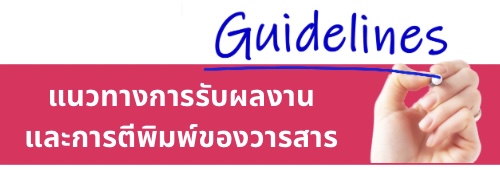รูปแบบการป้องกันภาวะซึมเศร้าตามความต้องการของนักศึกษาพยาบาล
คำสำคัญ:
ภาวะซึมเศร้า, การป้องกันภาวะซึมเศร้า, นักศึกษาพยาบาลบทคัดย่อ
การวิจัยเชิงคุณภาพครั้งนี้มีวัตถุประสงค์เพื่อศึกษาการรับรู้เกี่ยวกับสาเหตุ การป้องกัน และความต้องการรูปแบบการป้องกันภาวะซึมเศร้าของนักศึกษาพยาบาล เลือกผู้ให้ข้อมูลแบบเฉพาะเจาะจง เก็บรวบรวมข้อมูลโดยการสนทนากลุ่ม จำนวน 24 ราย และการสัมภาษณ์เชิงลึก จำนวน 12 ราย ในเดือนกรกฎาคม - พฤศจิกายน พ.ศ. 2563 วิเคราะห์ข้อมูลโดยการวิเคราะห์เนื้อหาตามวิธีของ Miles & Huberman (1994)
ผลการศึกษาพบว่า รูปแบบการป้องกันภาวะซึมเศร้า แบ่งออกเป็น 3 ด้าน คือ 1) สาเหตุที่ทำให้การเกิดภาวะซึมเศร้า ประกอบด้วย 6 ประเด็น ได้แก่ ปัญหาความรัก ปัญหาความคาดหวังและการกดดันด้านการเรียนจากครอบครัว ปัญหาการเงินในครอบครัวและคนใกล้ชิดในครอบครัวติดสุรา การจัดการปัญหาไม่มีประสิทธิภาพ ความผิดหวังที่ไม่เป็นอย่างที่คาดหวัง และปัญหาสัมพันธภาพกับเพื่อน 2) วิธีการป้องกันภาวะซึมเศร้า ประกอบด้วย 4 ประเด็น ได้แก่ การฝึกตนเองมองโลกในแง่บวก การสนับสนุนและการช่วยเหลือจากเพื่อน ครอบครัว อาจารย์พยาบาล และการสนับสนุนจากบุคคลสำคัญรอบข้าง และ 3) ความต้องการรูปแบบการป้องกันภาวะซึมเศร้า ประกอบด้วย 2 ประเด็น ได้แก่ กิจกรรมนันทนาการที่ช่วยป้องกันปัญหาสุขภาพจิต และการมีแหล่งช่วยเหลือและสนับสนุนการป้องกันปัญหาสุขภาพจิตในสถาบันการศึกษา
ผลการศึกษานี้ เป็นข้อมูลพื้นฐานในการพัฒนารูปแบบการส่งเสริมสุขภาพและป้องกันภาวะซึมเศร้าในนักศึกษาพยาบาล ในการวางแผนการจัดกิจกรรมเสริมหลักสูตรหรือพัฒนารูปแบบการป้องกันภาวะซึมเศร้า โดยอาศัยความร่วมมือกับแหล่งสนับสนุนทางสังคม เพื่อลดปัจจัยเสี่ยงและเสริมสร้างปัจจัยปกป้อง โดยเฉพาะการจัดการกับอารมณ์ การจัดการกับปัญหาที่มีประสิทธิภาพ การสร้างความแข็งแกร่งในชีวิต และการสร้างสัมพันธภาพกับบุคคลอื่น
Downloads
เอกสารอ้างอิง
Aradilla-Herrero, A., Tomás-Sábado, J., & Gómez-Benito, J. (2014). Associations between emotional intelligence, depression and suicide risk in nursing students. Nurse Education Today, 34(4), 520-525.
Brandy, J. M., Penckofer, S., Solari-Twadell, P. A., & Velsor-Friedrich, B. (2015). Factors predictive of depression in first-year college students. Journal of Psychosocial Nursing and Mental Health Services, 53(2), 38-44.
Bundasak, T., Chaowiang, K.-O., Jangasem, N., & Intawat, J. (2020). Effects of using the adaptation enhancing program on depressive symptoms among nursing students. Journal of The Royal Thai Army Nurses, 21(2), 443-452.
Bundasak, T., Jungasem, N., Supsung, A, & Chaichanarungruang, W. (2021). Prevention of depression among nursing students. Boromarajonani College of Nursing, Uttaradit Journal, 13(1), 62-70.
Chen, C. J., Chen, Y. C., Sung, H. C., Hsieh, T. C., Lee, M. S., & Chang, C. Y. (2015). The prevalence and related factors of depressive symptoms among junior college nursing students: A cross-sectional study. Journal of Psychiatric and Mental Health Nursing, 22(8), 590-598.
Dawood, E., Mitsu, R., Al Ghadeer, H., & Alrabodh, F. (2017). Assessment of depression and its contributing factors among undergraduate nursing students. International Journal of Nursing, 4(2), 69-79.
Kaewprom, K, & Chernarome, C. (2013). Interpersonal interaction and depression in undergraduate nursing students. Journal of Nurses Association of Thailand, North-Eastern Division, 31(4), 128-135.
Klongdee, K., & Chaniang, S. (2019). Factors predicting depression in nursing students at Boromarajonani college of nursing Naknon Phanom, Nakhon Phanom university (Research Report). Nakhon Phanom: Boromarajonani College of Nursing Naknon Phanom university.
Klongdee, K., & Chaniang, S. (2021). Factors predicting depression in nursing students at Boromarajonani college of nursing Naknon Phanom, Nakhon Phanom university. Journal of the Police Nurses, 13(1), 148-157.
Labrague, L. J. (2013). Stress, stressors, and stress responses of student nurses in a government nursing school. Health Science Journal, 7(4), 424-435.
Lincoln, Y. S., & Guba, E. G. (1985). Naturalistic inquiry. New Delhi: Sage.
Melissa-Halikiopoulou, C., Tsiga, E., Khachatryan, R., & Papazisis, G. (2011). Suicidality and depressive symptoms among nursing students in northern Greece. Health Science Journal, 5(2), 90-97.
Miles, M. B., & Huberman, A. M. (1994). Qualitative data analysis: An expanded sourcebook (2nd ed.). Thousand Oaks: Sage.
Morse, J. M. (Ed.). (1990). Qualitative nursing research: A contemporary dialogue (Rev. ed.). New Delhi: Sage.
Puido-Martos, M., Augusto-Landa, J. M., & Lopez-Zafra, E. (2011). Sources of stress in nursing students: A systematic review of quantitative studies. International Nursing Review, 59(1), 15-25.
Ratanasiripong, P. (2012). Mental health of muslim nursing students in Thailand. International Scholarly Research Network Nurse, 463-471.
Rezayat, F., & Nayeri, N. D. (2014). The level of depression and assertiveness among nursing students. International Journal of Community Based Nursing and Midwifery, 2(3), 177- 184.
Ross, R., Wolf, L., Chiang-Hanisko, L., Tanaka, T., Takeo, K., Boonyanurak, P., ... Saenyakul, P. (2014). Depression and its predictors among nursing students in four countries: USA, Thailand, Taiwan and Japan. Journal of The Royal Thai Army Nurses, 15(3), 195-201.
Rukkhajeekul, S. (2013). Depression and suicidal behaviors among Naresuan university students. Journal of Psychiatric Association of Thailand, 58(4), 359-370.
Sriwichai, P., & Wongchaiya, P. (2013). A sense of belonging, stress and depression amongst first-year nursing science students at Boromrajonnani college of nursing, Phayao. Thai Journal of Nursing Council, 27(4), 57-68.
Suvarnarong, K., Kaesornsamut, P., Kumpalasiri, N., Kongsuriyanavin, W., & Krongthammachart, K. (2014). The effects of yoga program on happiness, self-esteem and depressive symptoms in nursing students. Nursing Science Journal of Thailand, 31(4), 66-78.
Tung, Y. J., Lo, K. K. H., Ho, R. C. M., & Tam, W. S. W. (2018). Prevalence of depression among nursing students: A systematic review and meta-analysis. Nurse Education Today, 63, 119-129.
Vatanasin, D, Chupan S., & Detchaiyod, P. (2019). Social problem-solving and depression among nursing students. Nursing Journal of the Ministry of Public Health, 29(1), 87-99.
Vatanasin, D., Hengudomsub, P., Vatanasin, S., Asarath, T., Chupan, S., & Srisopa, P. (2015). Factors predicting depression among health science students. The Journal of Faculty of Nursing Burapha University, 23(4), 31-47.
ดาวน์โหลด
เผยแพร่แล้ว
รูปแบบการอ้างอิง
ฉบับ
ประเภทบทความ
สัญญาอนุญาต
ผลงานที่ได้ตีพิมพ์แล้วจะเป็นลิขสิทธิ์ของวารสารพยาบาลตำรวจ















